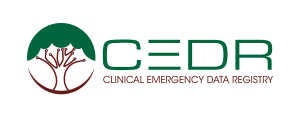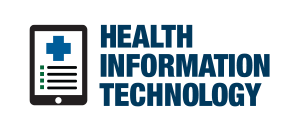In a few short years, ACEP has grown its Quality Team to include five major areas that collectively drive digital transformation in emergency medicine: Clinical Emergency Data Registry (CEDR), Emergency Quality Network (E-QUAL), Quality Measures, Data Science, and Health Information Technology (HIT). Together, the ACEP Quality Team provides products and programs to help protect earned revenue, improve patient outcomes, coordinate care, and reduce clinician burden. Learn more.
Explore This Issue
ACEP Now: Vol 40 – No 01 – January 2021 CEDR, the first EM specialty-wide Qualified Clinical Data Registry (QCDR), is now five years old. While the Centers for Medicare and Medicaid Services (CMS) has substantially reduced the number of approved QCDRs, CEDR is a shining example of success within emergency medicine. CEDR not only gathers and reports data, it provides participating departments with measure refinement and improvement strategies. In 2019, CEDR participants received more than $3.4 million in CMS’ Merit-based Incentive Payment System (MIPS) bonuses.
CEDR, the first EM specialty-wide Qualified Clinical Data Registry (QCDR), is now five years old. While the Centers for Medicare and Medicaid Services (CMS) has substantially reduced the number of approved QCDRs, CEDR is a shining example of success within emergency medicine. CEDR not only gathers and reports data, it provides participating departments with measure refinement and improvement strategies. In 2019, CEDR participants received more than $3.4 million in CMS’ Merit-based Incentive Payment System (MIPS) bonuses.
2020 CEDR Data Elements
- 200+ EM practice groups
- 700+ locations
- 15,000+ clinicians
- 20 million unique visits
For 2021: Having gathered data from more than 30 million distinct patients since 2015, totaling more than 75 million encounters, CEDR will enter its next phase; it will leverage the database beyond MIPS by de-identifying and aggregating the data to create an accessible research platform. CEDR is working to customize and streamline the digital data cycle and resulting policies within electronic health records to reduce burden on clinicians and improve outcomes. Learn more.
 E-QUAL is a virtual learning community designed to achieve higher-quality patient outcomes at lower cost by creating and accumulating meaningful tools for emergency clinicians and quality improvement leaders. E-QUAL works to advance local quality improvement efforts focused on high-impact areas that demonstrate the value of emergency care including improving sepsis outcomes, reducing avoidable imaging, reducing chest pain hospitalizations, reducing harm from opioids, and improving stroke care.
E-QUAL is a virtual learning community designed to achieve higher-quality patient outcomes at lower cost by creating and accumulating meaningful tools for emergency clinicians and quality improvement leaders. E-QUAL works to advance local quality improvement efforts focused on high-impact areas that demonstrate the value of emergency care including improving sepsis outcomes, reducing avoidable imaging, reducing chest pain hospitalizations, reducing harm from opioids, and improving stroke care.
Emergency departments participate in an E-QUAL initiative by joining a learning collaborative offered annually focusing on a single clinical topic. With a learning collaborative, each emergency department designates a local ED champion who leads a quality improvement project supported by the data and education available in the virtual E-QUAL portal.
E-QUAL had great success from 2015 through 2020 efforts to improve care across multiple practices. With 1,017 EDs participating, including 389 rural, critical access, or safety-net hospitals, and 32,000 emergency clinicians, some highlights include:
- 6,000+ improvement activity credits earned for the CMS Quality Payment Program
- 35 percent decline in opioids administered
- 23 percent increase in alternatives to opioids prescribed
- 25,000 lives saved from better sepsis care
- 30,000 fewer patients exposed to ionizing radiation
- $55 million saved in avoidable imaging studies and hospitalization
E-QUAL enrollment for 2021 is now open. This year’s Opioid Wave IV, with enrollment closing on Feb. 14, is focused on helping emergency departments develop programs to treat addiction for patients with opioid use disorder or nonfatal opioid overdose. The 2021 Stroke Wave II collaborative, with enrollment closing March 14, is expanding its focus to both hemorrhagic and ischemic stroke. Emergency departments can enroll for free. Learn more.
 ACEP’s Quality Measures initiative enables clinicians to lead the development of metrics that matter in emergency care. This approach links measures to outcomes, reduces clinician burden, and delivers meaningful information to clinicians and patients. Through CEDR, clinicians may choose to report QCDR measures and MIPS measures to receive credit for MIPS quality reporting. Learn more. In 2020, the Quality Measures initiative supported:
ACEP’s Quality Measures initiative enables clinicians to lead the development of metrics that matter in emergency care. This approach links measures to outcomes, reduces clinician burden, and delivers meaningful information to clinicians and patients. Through CEDR, clinicians may choose to report QCDR measures and MIPS measures to receive credit for MIPS quality reporting. Learn more. In 2020, the Quality Measures initiative supported:
- 21 QCDR measures
- 22 MIPS measures
For 2021, CMS has approved ACEP’s yearly QCDR self-nomination for the fifth straight year. In addition to measures available this year, the Quality Team successfully built and nominated five new measures:
- ACEP 54: Appropriate Utilization of FAST Exam in the Emergency Department
- ACEP 55: Emergency Department Utilization of CT for Minor Blunt Head Trauma for Patients Aged 2 Through 17 Years (formerly ACEP 20)
- ACEP 56: Follow-Up Care Coordination Documented in Discharge Summary
- ACEP 57: Avoidance of Opioid Therapy for Migraine, Low Back Pain, and Dental Pain
- ACEP 58: Appropriate Treatment for Adults with Upper Respiratory Infection (URI)
 Data alone don’t solve problems; they must be transformed into knowledge to have applicable value. The Data Science team utilizes five years of CEDR data to bridge the clinical gaps and democratize data through the analytics platform that will drive improved outcomes and facilitate new EM research. Current data science projects include:
Data alone don’t solve problems; they must be transformed into knowledge to have applicable value. The Data Science team utilizes five years of CEDR data to bridge the clinical gaps and democratize data through the analytics platform that will drive improved outcomes and facilitate new EM research. Current data science projects include:
- Build relationships with the Centers for Disease Control and Prevention (CDC) National Syndromic Surveillance Program:
- Outbound Data: Diagnostic information on influenza-like visits
- Inbound Data: Department of Health and Human Services (HHS) region breakdown of ED visits
- Improve the performance of the CDC National Hospital Ambulatory Medical Care Survey process
- Opioid research with the National Institutes of Health/National Institute on Drug Abuse
- Cutting-edge health IT tools for scaling health research with HHS Office of the National Coordinator/Medstar
- National diagnostic performance dashboard with the Agency for Healthcare Research and Quality/Johns Hopkins University
- A bacterial meningitis measure with the American Academy of Neurology
- A Moore Grant for pulmonary embolism measure development
 HIT encompasses a broad scope of work that includes mining health information exchanges to improve health care quality, safety, and efficacy. HIT programs help discover and drive efforts to reduce clinical burnout, especially by addressing inefficiencies across electronic medical record systems. Learn more.
HIT encompasses a broad scope of work that includes mining health information exchanges to improve health care quality, safety, and efficacy. HIT programs help discover and drive efforts to reduce clinical burnout, especially by addressing inefficiencies across electronic medical record systems. Learn more.
HIT efforts are stewarded by ACEP’s newest committee, the Health Innovation & Technology Committee (HITC). The HITC is working with ACEP staff to “develop a plan to insert ACEP at the center of health information/innovation policy development and management, using data-driven advocacy and leveraging new technologies to improve emergency care delivery and patient outcomes.”
The landscape of emergency medicine and acute care has changed so much in the past five years and continues to transform rapidly. While the future is difficult to predict, the ACEP Quality Team is taking the pioneering spirit that built the College to move boldly forward with a vision for the future.
Pages: 1 2 3 | Multi-Page





No Responses to “ACEP’s Quality Team Leads a Digital Transformation in Five Areas”